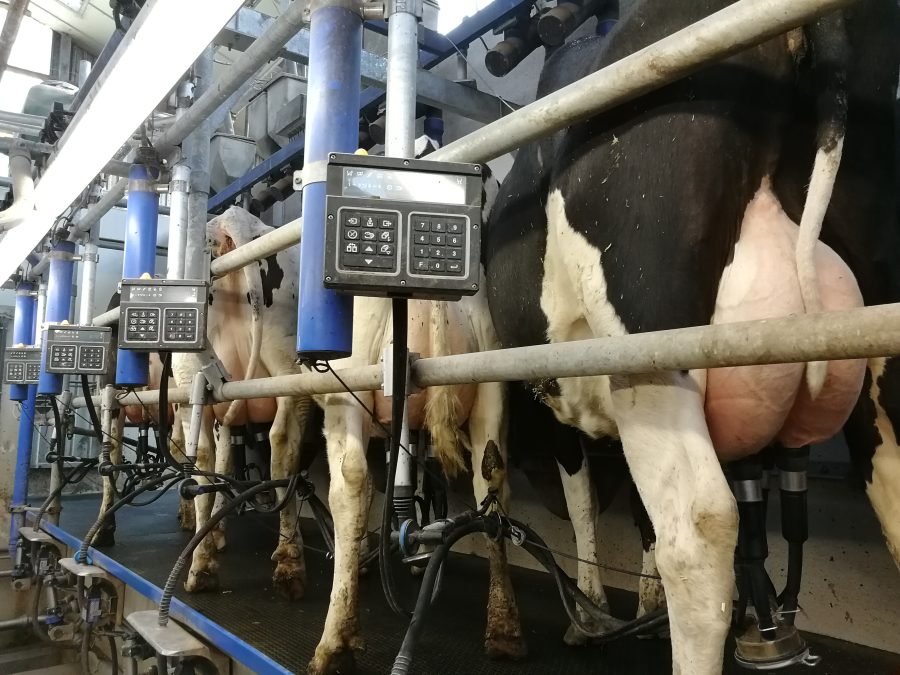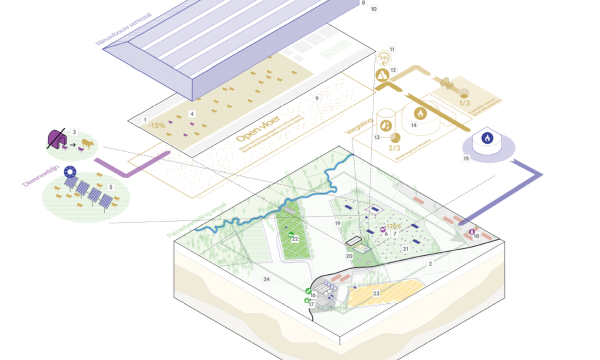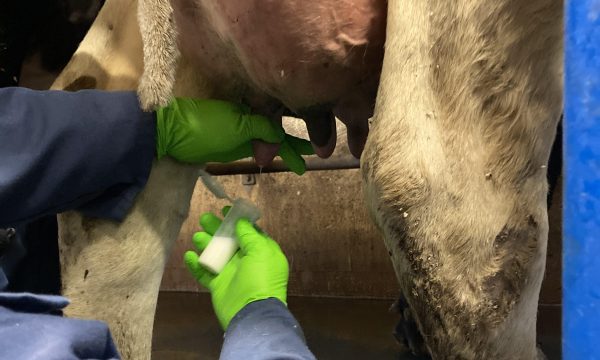Press release PhD student finds method to determine cow health from milk sample

Based on one method that analyzes a number of well-chosen, easily measurable telltale components in milk, livestock farmers can easily and quickly monitor the metabolic health of cows and predict a bit themselves. That is the outcome of Stijn Heirbaut's doctoral work at ILVO and Ghent University. An important breakthrough for the dairy sector, because faster detection of health problems in cows means earlier and better treatment.
A cow's metabolic health reflects the extent to which its metabolism copes with sudden changes in energy requirements, for example, during the period around calving and the start of milk production. During that challenging period, a cow has to draw on its own body reserves. Sometimes this puts its metabolism under such pressure that excessive amounts of ketones are produced and the cow becomes sick. Therefore, it is especially important for dairy farmers to monitor cow health at that time.
Ketones are the 4th fuel besides carbohydrates, proteins and fats. Top athletes use ketones as a dietary supplement to perform better. However, if the body itself produces too many of these ketones to release energy, it can cause problems.
Milk tells how the cow is doing
Evaluation of the metabolic health of cows can be done based on blood measurements, but this is fairly expensive, not very practical and not very animal-friendly either. However, Heirbaut found easily measurable "tell-tale signs" (parameters) in milk that reflect the mobilization of body reserves and production of ketones. Moreover, these parameters can be measured with one so-called "mid-infrared" device, which delivers a lightning-fast analysis.
Currently, this expensive device can only be found in specialized labs. Incorporating an alternative "near-infrared" sensor into an automatic milking system could eliminate this obstacle. This an avenue currently being studied.
With a production of 9500 kg of milk / year, you can consider a dairy cow a top athlete. We must therefore ensure that these animals are perfectly supported. Based on some specific parameters in milk, we can predict whether an animal is in great condition or needs extra support.
Health monitoring in the period before calving
The earlier after calving metabolic health can be predicted, the better. However, it still proved challenging to predict status for the next three weeks as early as the third day after calving and based only on milk parameters. Predictions are improved by also taking into account feed intake and body conditions of the cow before calving.
To properly predict their metabolic health, information was screened during the pre-calving period. Appropriate body condition and good feed intake are very important. Cows that eat less before calving can benefit from extra monitoring using a milk sample after calving.
Contact
Doctoral researcher: Stijn.Heirbaut@UGent.be
Promotors :
- Ghent University, Faculty of Bio-engineering sciences, Research Group on Animal Science and Aquatic Ecology, Veerle.Fievez@UGent.be
- ILVO, leen.vandaele@ilvo.vlaanderen.be


